Nowicki’s Other Masterpiece: the Erdahl-Cloyd Wing at NC State
Built in 1952, the Erdahl-Cloyd Wing of D.H. Hill Library is attributed to the official architect of record, William Henley Deitrick. However, in the years in which the building was conceived, Deitrick was no longer designing, but handling the business end of the firm.
The details of who designed the Erdahl-Cloyd Student Union Building have been rather murky in history books and official records. The surprising part is that the design came from Matthew Nowicki, the visionary architect behind Dorton Arena. Sadly, he never received credit for it.
Nowicki: A Bright Light for the Region
Matthew Nowicki (pronounced nuh-vit-ski) was possibly the most internationally noteworthy faculty member of the School of Design at State College during its heyday of the 1950s and 1960s. He was the Polish delegate to the United Nations Building Committee, a friend to the Secretary General of the United Nations, and had a stellar international reputation as an architect.
From Resistance Fighter to the Head of a Star Architecture Program
Political unrest brought Nowicki to the United States at the beginning of the Cold War:
Still another innovative university program that prospered in the early 1950s was that at North Carolina State University in Raleigh. The initial force behind the curricular reforms here was Dean Henry Kamphoefner, but the initiative was quickly taken up by the Polish architect Matthew Nowicki who […] was just emerging as a highly influential voice on the American scene. He had graduated from the Warsaw Polytechnic in 1936 and briefly enjoyed success in Warsaw before the Nazi invasion. As a lieutenant in the Polish army reserve, he was actually training with an antiaircraft battery on the outskirts of the city in September 1939 when hundreds of German bombers flew overhead to initiate the war […]
Nowicki joined the Polish underground, and after surviving years of considerable dangers, in 1945 served as chief of planning for the rebuilding of central sections of the war-bombed city of Warsaw.
He left shortly thereafter due to the repression of the Soviet-controlled communist secret police.
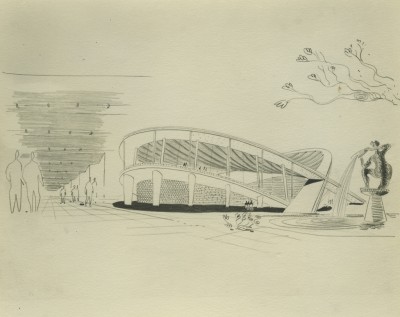
Nowicki’s sketch for the Paraboleum, now known as Dorton Arena. Image courtesy of and copyright NCSU Special Collections
Influencing the International Scene, from Raleigh
Nowicki’s exit from Europe started a chain of events ending with relocation to Raleigh. Architectural critic Lewis Mumford approached Dean Kamphoefner about a position within the new architecture school at State College in Raleigh which had a soaring reputation.
In describing who Mr. Nowicki was and what he was capable of, perhaps no one else said it as eloquently as Mr. Mumford did:
Nowicki’s dictum that the client makes an important contribution to the building and deserves part of the credit stemmed from his profound respect for ordinary men and their ways, and this was fully rewarded by the popular response his personality and his work evoked. Even in the conservative South, long hypnotized by the class-genteel tradition, his daring plans for the arena and the grandstand for the permanent State Fair buildings in Raleigh (in collaboration with William Deitrick) met with enthusiastic acceptance from people who, though architecturally unsophisticated, could nevertheless appraise the quality of the man they were dealing with. This sense of the specific human occasion is what gives to Nowicki’s designs a variety unmatched by anyone this side of Frank Lloyd Wright. But it was a talent potentially greater than Wright’s, just to the extent that Nowicki’s humility was a greater quality than Wright’s arrogance.
The Student Union Proposal and the “cheap and flashy stores at Miami Beach”
In the late 1940s, William Deitrick was awarded the commission to build a new Student Union building at State College. Deitrick was the first area architect to build in the modernist style, and at the time he was awarded the commission, had two architects on payroll (Milton Small and Matthew Nowicki) who were connected to the new School of Design.
The initial designs (sketched by Milton Small) for the building were met with scorn by the chairman of the Building Committee, David Clark. In a letter to the committee during the very beginning of the process, one of his three objections to the submitted plans was the style: “I definitely do not favor a modernistic type of building.”
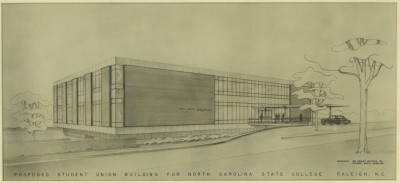
Milton Small’s futuristic proposal for the Student Union. Image courtesy of and copyright NCSU Special Collections
Later in the process, he was a bit more colorful in his criticism of the design. In a letter to W.D. Carmichael, Controller of the Consolidated University of North Carolina, Clark had this to say:
In Asheville, N.C., on the road out to Beaver Lake, there is a group of four small stores with a front which is a dead ringer for the elevation of the Student Union, as submitted by W. Henley Deitrick at the meeting of the Building Committee last Tuesday. […]
I know that the elevation was exactly like some cheap and flashy stores at Miami Beach, Florida, but I did not know there were similar stores at Asheville.
— David Clark
Small’s proposal in 1949 for the Student Union went over like a lead balloon with the Building Committee. This was a completely new way to design a building, and many administrators had strong negative opinions on the new style.
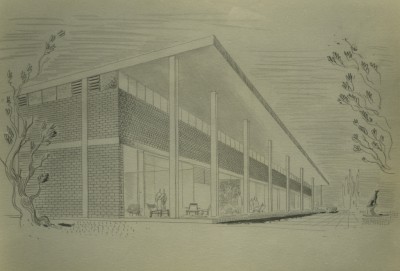
Nowicki’s concept drawing of the Student Union. Image courtesy of and copyright NCSU Special Collections
The Nowicki Solution
While Small’s proposal was a bold gesture intended to bring the future to the State College campus, it appears that it was a bit too forward thinking for the Trustees and Building Committee. Small left Deitrick’s firm in 1949, and presumably the design was given to Nowicki to conceive. He likely only provided the concept for the exterior elevations, as he was not licensed to practice architecture in the United States.
Sadly, he would not get to see his vision realized, with the Student Union as well as the new arena at the fairgrounds.
A Flame Extinguished Too Soon
On August 31, 1950, Nowicki was traveling back to Raleigh from India where we was planning a new provincial capital, Chandigarh, in a newly independent India. Somewhere over the Egyptian desert the Transworld Airlines airplane crashed and all on board perished.
He was buried in a mass grave with the other victims, with a marker that said simply: “Architect.” Mass was held locally at Sacred Heart Cathedral, and was visited by many dignitaries.
The Chandigarh project was then given to perhaps the most noteworthy modernist architect in history, Le Corbusier.

One of Nowicki’s unimplemented plans for the fairgrounds, bearing a striking resemblance to the Erdahl-Cloyd Student Union. Image courtesy of and copyright NCSU Special Collections
The Resemblance of Erdahl-Cloyd to Other Nowicki Designs
I first saw Nowicki’s sketch for the Erdahl-Cloyd Student Union Building in a book containing his works that he was assembling shortly before his death. I was surprised, as references I had seen to the building did not attribute it to him.
After comparing the sketches of various buildings in this book, I became convinced that he designed the Erdahl-Cloyd Student Union building, but could find no corroborating evidence to support this.
Saarinen, Brandeis University, and the Open Canopy
One of the biggest collections in the book was the master plan for Brandeis University. This is a body of work in which he worked in collaboration with the modern genius Eero Saarinen, who would later build on Nowicki’s parabolic shelter idea with the Terminal at JFK Airport. In a book about Saarinen, it is speculated that he implemented several of Nowicki’s ideas, and not just the Terminal.
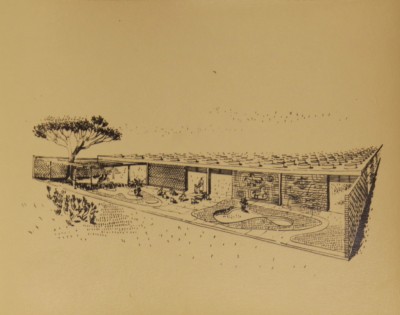
One of the buildings in Nowicki’s Brandeis University Master Plan, showing an open canopy. Image courtesy of and copyright NCSU Special Collections
One of the buildings in this plan (above) contained an opening in the overhang for a green space below. This very unique, if overlooked, feature is something I haven’t seen anywhere else. Although it was circumstantial evidence, seeing the same feature present in the Erdahl-Cloyd Student Union building was a strong indication that both designs were his.
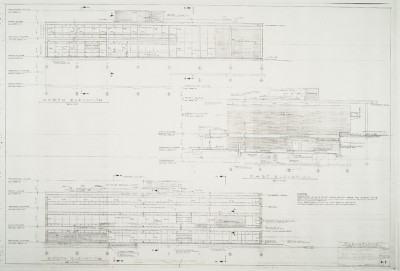
Blueprint for the Student Union Building. Deitrick Arch. of record, Drawn by W.C.C. Jan 31, 1951 – Four months after Nowicki’s death. Image courtesy of and copyright NCSU Special Collections
Confirming the True Designer of the Student Union
After spending a lot of time at the NCSU Special Collections Research Center going through multiple collections, I had more information, but no substantial evidence.
That changed after reaching out to an architecture professor in Poland, Dr. Marta Urbanska. She had written her dissertation on Nowicki, and flew to Raleigh to speak with former colleagues of his. In an email, she confirmed that Nowicki designed the building:
It was indeed [former School of Design professor] Robert Burns and Mr. Manuel Bromberg, artist, who informed me of Nowicki’s authorship [of the Student Union]. The entire story is of course obscured by the same regrettable controversy which regards the Raleigh Arena: Nowicki was not a licensed architect in the USA, thus he had to cooperate with one – i.e. William Deitrick. […]
The stylistic comparison of the Student Union building and other designs by Nowicki, both Polish (such as the prewar sports club in Warsaw or a hotel in Augustów) and American, leaves no doubt as to the authorship – the crisp, modern, yet classically calm and exquisitely elegant composition is unmistakably his.
—Dr. Marta A. UrbaÅ„ska
Adj. Professor of Architecture, Cracow University of Technology
Erdahl-Cloyd Today
After Milton Small designed the new Talley Student Center which replaced it, the Erdahl-Cloyd Student Union became the West Wing of D.H. Hill Library.
Facing a Different Direction
It’s always been puzzling to me that the building’s ‘face’ is on Hillsborough Street, and away from most pedestrian traffic, where the Brickyard is today. This design decision was a direct result of pressure by NC State officials:
Under pressure from university administration, an attempt was made to follow the tradition of the nineteenth-century Southern plantation house. The portico was therefore placed on the north side because the authorities felt that this was the “entrance” side of the building. […] The resulting building defies the precepts of Vitruvius and Louis Sullivan by having its portico on the shaded side and a complete unshaded window on the south side.
–Elizabeth Waugh, The South Builds
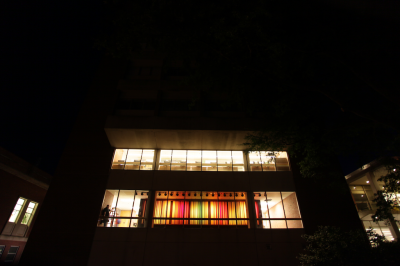
The Color Wall at DH Hill Library, another legacy of the School of Design. The Erdahl-Cloyd wing is visible on the right
Beautiful Architecture, a Kinetic Light Sculpture, and Fantastic Ice Cream
The former Student Union still serves as a part of the library today, but is also a place for student relaxation or collaboration. It is adjacent to the recently restored Color Wall, a kinetic light sculpture created by former School of Design professor and artist Joe Cox.
The Erdahl-Cloyd wing is home to the Creamery, which sells Howling Cow ice cream, made locally on NC State campus. It was set up a couple of years ago, and also features a walk-up window on Hillsborough Street. You don’t have to be a student to get great tasting ice cream and milkshakes. Simply park on Hillsborough Street and walk up to the window.
An Endangered Masterpiece
Sadly, the Erdahl-Cloyd wing of the library will likely be demolished in the coming years. The NC State Library Master Plan [PDF] calls for the demolition of this structure:
Phase 3 will include renovation and expansion of the Hill Library. Our recommendation is to demolish the Erdahl-Cloyd wing, complete renovation of the east wing begun in Phase 1, renovate the Towers, and reconfigure the lower floors of the building and expand the facility to the west (where Erdahl-Cloyd is currently located) to create a clear, understandable, functional and beautiful entry to the facility.
To be sure, the plan is several years old and as far as I know, there is no set date to demolish it.
This was the first modernist building built on campus, envisioned by a legendary architect and Dean of the School of Architecture. It deserves to live on as a testament to the bold experimental thought of the college during a period of national prominence.
This building won an AIA-NC award (with merit) in 1955. There are few, if any, campus buildings that have won an AIA award. This place matters and should not be destroyed.
Related Articles
Further Reading
- Maciej Nowicki: A Tribute to a Neglected Genius (Cracow Life)
- Matthew Nowicki (Entry at NC Architects and Builders database)
- Matthew Nowicki Drawings and Other Material (NCSU Special Collections)
- Maciej Nowicki (Wikipedia)
Copyright Information
All images labeled as “copyright NCSU Special Collections†are protected by copyright and are not to be distributed or reproduced without permission from the Special Collections Research Center. I kindly ask you respect this and not distribute copyrighted material.
All other images were taken by me (John Morris) and are not under similar copyright restrictions. I encourage you to distribute, reproduce, or otherwise share those images.
Special Thanks
I’d like to give a big thank you to Dr. Marta Urbańska as well as the NCSU Special Collections Research Center for being so helpful in locating the historic information, drawings, and photographs used in this article.

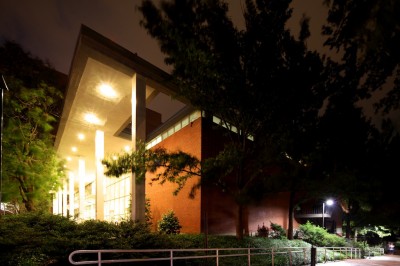
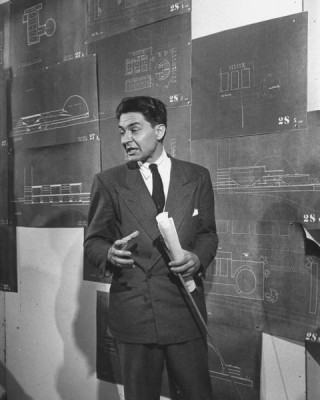
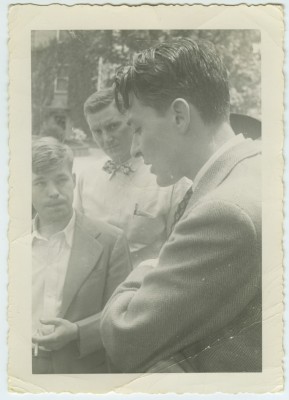
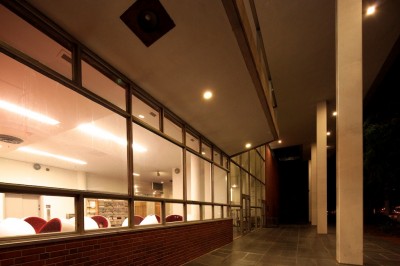
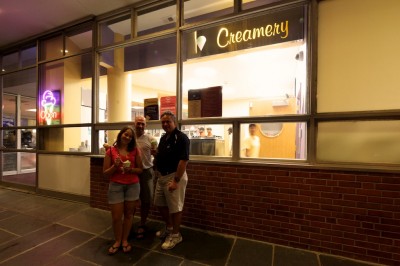
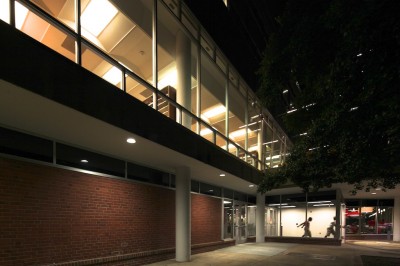
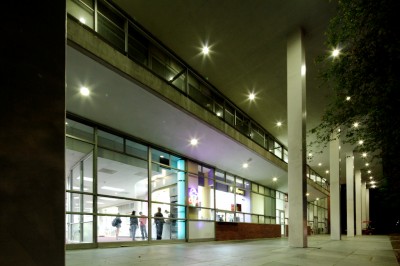
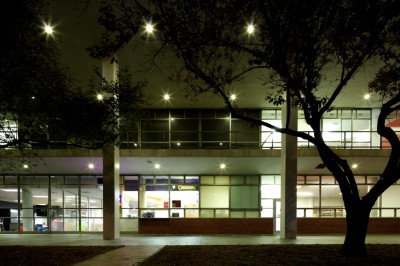
 Sign up for the Newsletter
Sign up for the Newsletter
09/16/2011
Thanks for this. It is excellent and thorough work and so much of the information is new to me.
09/16/2011
Correct me if I am wrong, but I thought at one time they actually did use the Hillsborough Street entrance. It was sort of a public entrance to the street & sidewalk. But they later closed it for security measures, as well as cost reasons (only need one manned checkout desk, on the brickyard side, instead of two).
09/16/2011
yes Bill, John did an awesome job on the research for this article!
RalRob — yes, I too remember when the public entrance to Erdahl-Cloyd was open to Hillsboro St. (closed off in the 1980s, I think). However, during the 1950s-1960s I think the intent of campus planners was to orient new buildings in this area toward the student plaza which later became known as the Brickyard. The new buildings of that era all reflect this — DH Hill Library, Harrelson Hall, Williams Hall and Gardner Hall. Thus it would make sense that Nowicki (and Deitrick) might have preferred the colonnaded facade to be on the south side of the Student Union, facing the plaza.
09/17/2011
Seeing as NCSU just spent a bunch of money and time to renovate the “Atrium” foodcourt that faces the Brickyard, I would be surprised to see them demolish and renovate the building.
I do wish they would reopen an entrance on the Hillsborough St. side. If NCSU is truly serious about helping to contribute to the Hillsborough St. Renaissance, opening this entrance would encourage more student foot-traffic on the street. They could also sell/develop the parking lot at the corner of Brooks Ave. and redevelop the bland office building at the corner of Gardner St. which are both big “missing teeth” in the Hillsborough St. streetscape.
09/20/2011
An interesting note about the brickyard: Dick Bell was asked to design and create the space but was given a paltry budget. The pattern was inspired by the available material, brick from Sanford, and by Italian Piazzos. There was so little money for construction that Mr. Bell trained the housekeeping staff how to lay bricks and they completed the Brickyard over the summer when there was less housekeeping work.
09/20/2011
Amazing article. Thanks for the history lesson. But would the university really demolish the west wing after pouring so much into renovations last year?
09/22/2011
I remember when the Hillsborough Street door closed. Folks above are correct. Reopening it would do wonders to enliven that portion of the street. There used to be lots of traffic in and out of that door and lots of commingling of library patrons and students there.
Reopening the entrance, along with the existing Creamery window, would be a great asset to the new Hillsborough Street-scape.
09/26/2011
John Morris has done a fantastic job in researching this article……I had never known of any attribution of the Erdahl-Cloyd building to Matthew Nowicki although I worked off and on over the years with the Milton Small firm and remember Erdahl-Cloyd as the Student Center when I came to the School of Design. I even remember Jerry Erdahl and Dean Cloyd for whom it is named. The thought of its possible demolition pains me tremendously, particularly after losing the NCSU Bookstore, a project I actually worked on with Milton Small.Seeing Nowicki’s conceptual sketch of the Dorton Arena again reminds me that this is one of the most eloquent examples of why architecture should be seen as the finest of the fine arts ….the one that most closely touches us in our daily lives. Would that the building had been realized as originally shown, rather than having those dramatic parabolic arches “supported” by those rather boring curtain walls.
09/27/2011
Thank you for the fine article. I was a student at the School of Design when Nowicki was dean and it was, indeed, a heady time. We were aware of his involvement with the student union design as well as the fairground arena and I sill feel the shock and extreme sadness at his very untimely death. His, and his wife Sasha’s, influences are still felt by all who knew and admired them. The School and the Raleigh community were fortunate to have had them, even for so short a time.
Thank you, again, for the fine article.
04/01/2019
Just stumbled on this article today.
NCSU is going to renovate the first floor soon and is doing architect selection now.
It will include a recognizable entry from Hillsborough St. where they are currently building the new exterior amenities.
I did the Smoothie U design a few years ago on the lower level. Kind of wish I had known this then!
05/27/2020
I’ve finished this article and that I definitely need more!
I consider myself to become really a picky reader along with also your work surpassed my expectations.
The previous article I remember to provoke the same emotions
was https://skischule-flims-laax-falera.ch/. Thank you
for a while . Keep writing!
09/28/2023
My father was the first college union Director as it was called back in the early 1950s. He died when I was 9 1/2 years old and the union was named after him and Dean Cloyd. I will be so very sad if it is torn down. I so enjoyed the union as a child: the thought-provoking art exhibitions and installations, the giant Christmas tree erected each year that went all the way up to the second floor, poking in the movie theater, where the venue was generally over my head. I loved dancing in the women’s room with all the mirrors when no one was there. I remember the Kamphoefners and their modern home, and the Matsumoto home was a block away. I am glad to see all the supportive words from people.-Cynthia Erdahl, Richmond, Virginia, September 28,2023